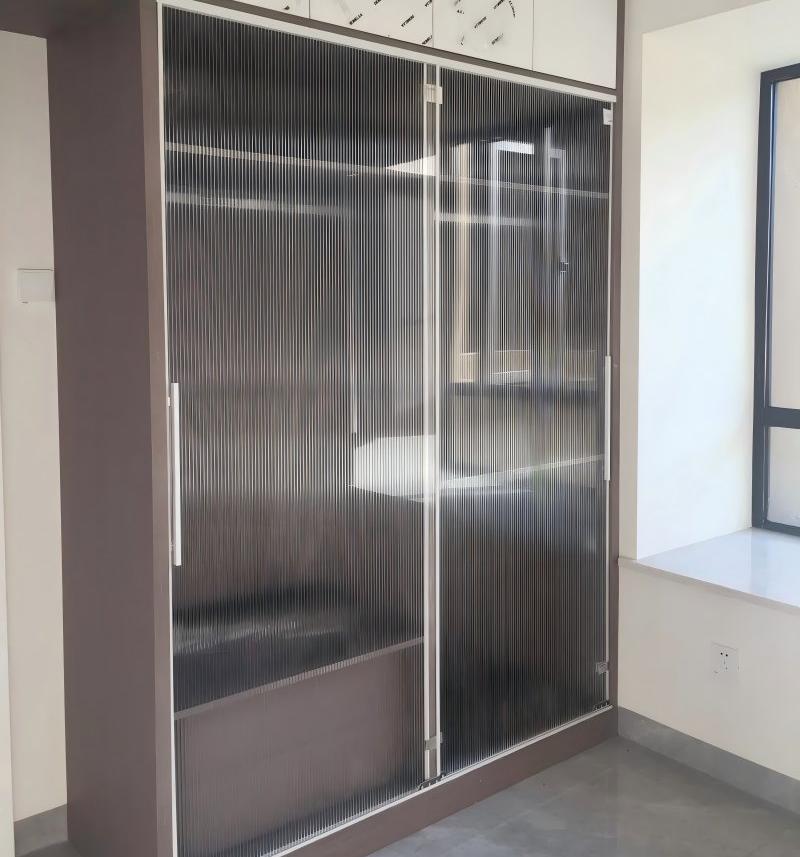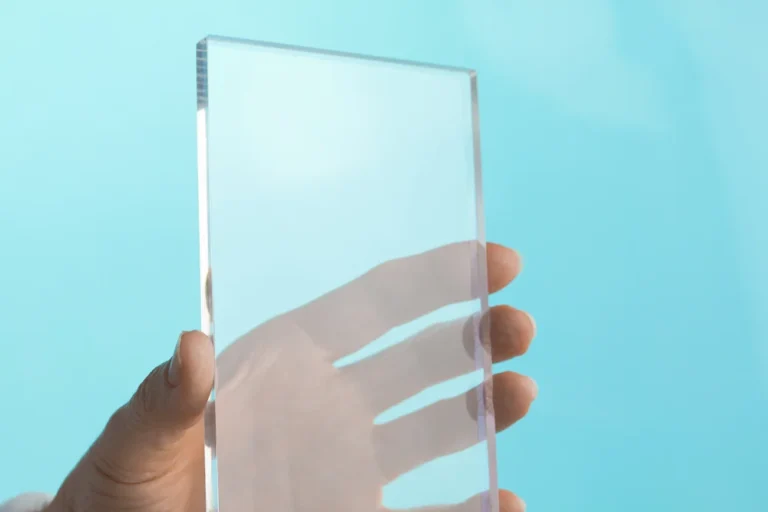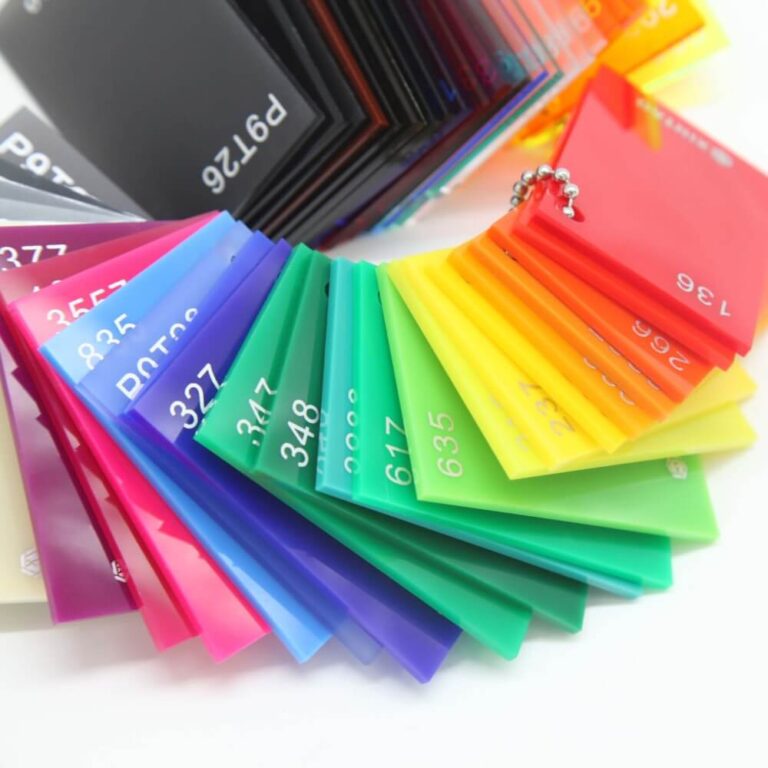-
Xinqi Development Zone, Leliu, Foshan, Guangdong

Acrylic leads the modern home environmental protection
Modern door panel material selection has shifted from simple functional requirements to the integration of technology, aesthetics and environmental protection. Among many materials, acrylic has become the new favorite of high-end residential and commercial spaces with its light transmittance close to glass and excellent weather resistance. Environmentally friendly wood-plastic composite materials have a place in the wave of sustainable construction with their recycling characteristics of “turning waste into treasure”.
At present, the selection of door panel materials has become a key decision in home and commercial buildings, directly affecting aesthetics, service life and maintenance costs. With the development of material technology, plastic-based composite materials are gradually replacing traditional wood, showing significant advantages in durability, environmental protection and design freedom.
Various types of door panel materials are competing fiercely in the market, and users need to weigh between solid wood, metal, glass and plastic substrates. Plastic door panels, especially acrylic, are becoming the first choice in the high-end market with their comprehensive performance.
1. Current challenges and trends in door panel material selection
Although traditional solid wood door panels have natural texture and classic beauty, they have inherent defects such as easy deformation, cracking and high maintenance costs, especially in high humidity environments. Metal and glass door panels face high cost and complex installation, which limits their wide application.
Modern buildings have increasingly stringent environmental protection requirements for materials, promoting the development of recycled materials and low-pollution processes. Plastic door panels, because their raw materials are mostly derived from recycled plastics and agricultural waste, have become a model of “turning waste into treasure“, which is in line with the concept of circular economy.
Consumers’ demand for personalized design has given rise to the prosperity of the customizable door panel market. Materials such as acrylic provide designers with a broad creative space through rich colors and modeling capabilities.
2. The rise and core classification of plastic door panels
In the plastic door panel family, PVC (polyvinyl chloride) door panels are known for their waterproof and moisture-proof properties, and are particularly suitable for high-humidity environments such as bathrooms and kitchens. Its special sealing strip design can effectively isolate water vapor, keep the room dry, and the surface cleaning only requires simple rinsing.
PE (polyethylene) sheets show excellent flexibility and chemical stability, and are suitable for places that require frequent opening and closing or contact with chemicals. Its low density reduces the weight of the door leaf and reduces the load on hardware.
As an extended application of PVC, the blister door panel achieves rich colors and three-dimensional textures through surface lamination technology. Despite the problem of slight dents caused by thermal expansion and contraction, its high cost performance still makes it popular in the cabinet field.
3. Excellent characteristics of acrylic door panels
Acrylic door panels (plexiglass) have more than 92% light transmittance, comparable to the clear texture of glass, and impact resistance is 16 times that of ordinary glass, which greatly reduces the risk of breakage, and is especially suitable for safety-sensitive areas with children.
Its weather resistance far exceeds that of most materials, and it can still maintain stable color and performance after long-term exposure to sunlight and wind and rain, and its service life can be extended by more than three years compared with other materials. Acrylic also has excellent processing performance, supporting secondary processing such as sawing, planing, hot bending, etc., and can be dyed, painted, silk-screened or vacuum coated.
In terms of safety, acrylic is not only non-toxic and odorless, but also harmless to the human body in long-term contact. It also does not release toxic gases when burned. It meets strict food-grade standards and is widely used in food display racks and medical equipment.
4. Advantages of environmentally friendly wood-plastic composite materials (WPC)
WPC is made of plant fibers such as wood powder and rice husks and recycled plastics (such as PE/PP), realizing the resource utilization of agricultural and forestry waste and plastic waste. Each ton of WPC is equivalent to saving 2.5 cubic meters of wood and protecting the annual growth of 1 acre of forest.
In terms of performance, WPC has both the texture of wood and the durability of plastic: anti-corrosion, anti-insect, zero formaldehyde, and an outdoor service life of more than 20 years. Its thermal expansion coefficient is only 3.5×10⁻⁵m/m·K, and its dimensional stability is better than that of pure plastic products.
Wood-plastic materials support traditional woodworking operations such as sawing, nailing, and planing. They have better nail holding power than most synthetic materials, and will not produce common defects such as knots and diagonal grains in wood. Their installation convenience is close to that of solid wood.
V. Comparative analysis of application scenarios
- High humidity environment: PVC and acrylic door panels perform well in places such as bathrooms and pool houses. Acrylic does not mold or yellow in a long-term water vapor environment, and its maintenance cost is significantly lower than that of solid wood.
- Outdoor applications: WPC and acrylic are the first choice for terrace doors and courtyard doors. WPC’s moisture-proof and corrosion-resistant properties make it widely used in outdoor floors and guardrail systems; acrylic maintains long-lasting and bright colors with its UV resistance.
- High-end indoor space: Acrylic’s high gloss surface and rich color selection make it an ideal choice for modern minimalist style and display-type commercial spaces (such as boutiques and showrooms), which can effectively enhance the sense of light and visual transparency of the space.
VI. Professional advice on purchase and maintenance
Climate adaptability is the primary consideration: PVC or acrylic is preferred in humid areas; areas with large temperature differences need to pay attention to the thermal expansion coefficient of the material. The stability of WPC and acrylic is better than that of ordinary plastics.
Certification and environmental protection labels cannot be ignored: food-grade acrylic must comply with FDA standards; WPC should have green building material certification; PVC door panels are recommended to choose low-lead formula products.
Daily maintenance:
- Acrylic door panels can be restored to transparency by wiping with soft cloth dipped in clean water, and avoid using abrasives
- WPC door panels are treated with special wood-plastic cleaner once a year to extend their life
- Regularly check the integrity of the sealing strip** at the joints of PVC door panels to prevent water seepage
VII. Future development trends
Functional coating technology is innovating the surface performance of door panels. Acrylic combined with anti-fingerprint nano coating solves the problem of leaving marks on high-gloss surfaces; After adding hydrophobic self-cleaning layer to WPC, the frequency of outdoor maintenance is further reduced.
Compounding has become the mainstream direction of material innovation. Three-layer co-extruded sheet of acrylic and WPC (acrylic surface/WPC core/PVC base) takes into account both decorative and structural properties, and its application has surged in high-end residential projects.
As environmental regulations become stricter, bio-based plastic door panels are being developed at an accelerated pace. New materials such as PLA acrylic substitutes based on corn starch and cellulose-reinforced PVC can reduce the carbon footprint of door panels by more than 30%.
Door panel material characteristics comparison table | Material type | Weather resistance | Maintenance cost | Environmental protection index | Applicable scenarios | Average lifespan | |————|——–|———-|———-|——————-|————-| | Acrylic | ★★★★★ | ★★☆☆☆ | ★★★☆☆ | High-end indoor/humid area | More than 15 years | | WPC | ★★★★☆ | ★☆☆☆☆ | ★★★★★ | Outdoor/area with large temperature difference | 20-30 years | | PVC | ★★★★☆ | ★★☆☆☆ | ★★★☆☆ | Bathroom/kitchen | 10-15 years | | Solid wood | ★★☆☆☆ | ★★★★★ | ★★☆☆☆ | Dry indoor | 10 years (maintenance required) |
The evolution of door panel materials is a microcosm of human wisdom in living. Acrylic has redefined modern aesthetic standards with its perfect combination of optical performance and toughness; WPC has interpreted the true meaning of sustainable development with the rebirth of straw and plastic bottles.
When technology gives new life to materials, behind every door is a double victory of function and ethics.







